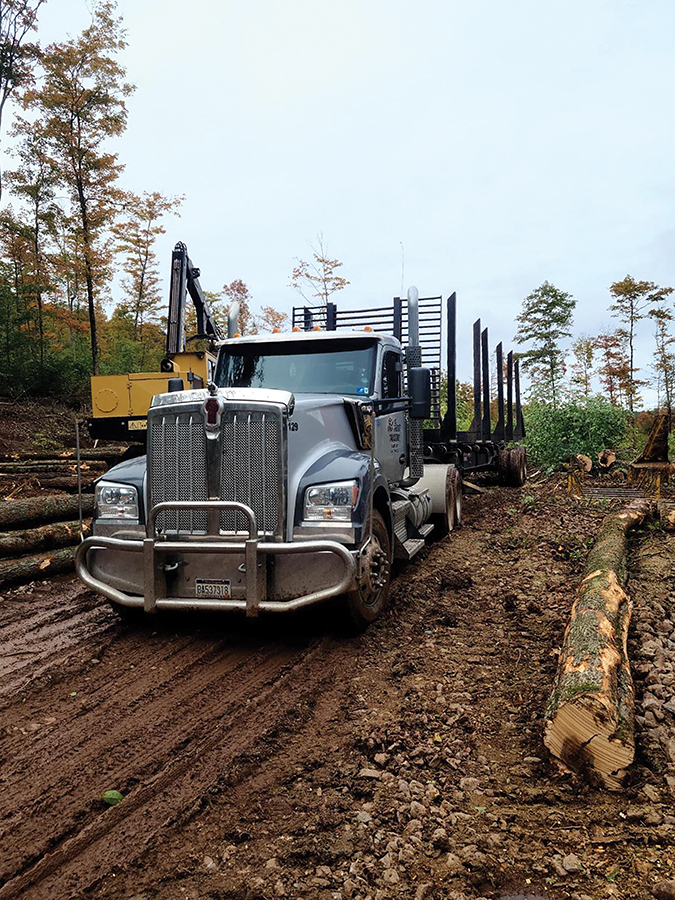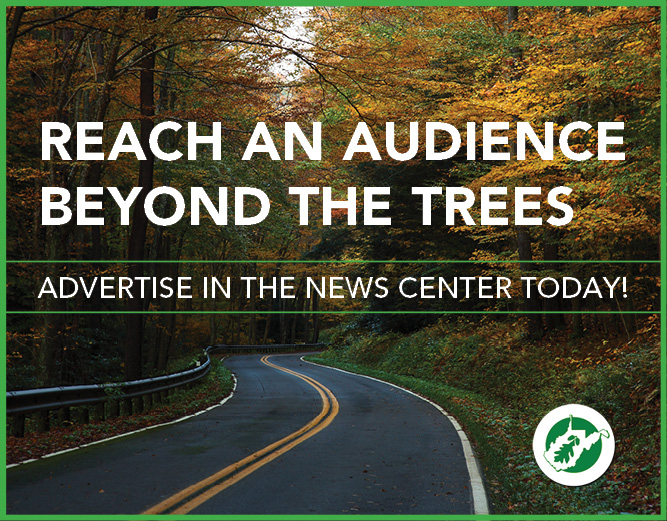As I researched the information for this article, I found out that the actual lighting requirements for trucks on West Virginia roadways are fairly simple, but the way the code reads it can become very confusing. The purpose of this article is to help inform you on the lighting that you are required to have.

I will start with the “low-hanging fruit,” as the saying goes. Are all of the lights actually working on your tractor and trailer? I travel a lot, and with the coming of winter and more hours of darkness, it is easy to see what is and what is not working on a truck. It is amazing to see how many log trucks, chip haulers, and the like have multiple lights or lamps not working. Take the time to fix them and keep them working, and try your best to keep the dirt off the lenses so that they can be seen by others on the road.
W. Va. Code §17C-15-9. Additional reflector equipment required on certain vehicles. This state statute would include all trucks and buses over eighty inches wide and over three thousand pounds. As you go forward with this article, I am including some of the code and some spread just to put things in perspective. I have researched many log truck crashes for this story and will continue to do so to see if there are any key patterns—but as you all know, we live in a state with not only a lot of two-lane roads that logs need to be hauled on, but also a lot of hills and valleys, sharp turns, and twisty roads. To navigate these roads on a daily basis takes a special kind of driver that must not only deal with our West Virginia roads, but with the weather that comes along with them!
The following is part of the West Virginia lighting chapter of W. Va. Code §17C-15-9. Additional lighting and reflector equipment required on certain vehicles. You will see from its wording that it can be confusing from the start.
West Virginia truck and trailer lighting requirements:
a. On every truck and bus shall be the following:
• On the rear, two reflectors, one on each side, and one stop light, one on each side
b. On every truck or bus eighty inches or more in overall width they must also have:
• Two clearance lights, one on each side, same on the rear
• On each side two side marker lamps, one at or near the front and one at or near the rear
c. On every tractor, one must have:
• Two clearance lamps one on each side, on the rear, one stop on each side
d. On every trailer or semitrailer having a gross weight in three thousand pounds
• On the front, two clearance lamps, one at each side
• On each side, two side marker lights, one at or near the front, and one at or near the rear
• On each side, two reflectors, one at or near the front and one at or near the rear
• On the rear, two clearance lamps, one at each side and also two reflectors, one at each side, and one stop light
e. On every pole trailer in excess of three thousand pounds
• On each side, one side marker lamp and one clearance lamp which may be in combination, to show to the front, side, and rear
• On the rear of the trailer or load, two reflectors, one at each side
This is the short version and there are many more applications listed in W. Va. Code §17C-15. I include the one above as a reference for the basics that truckers will need. They can be very onerous if you let them be. So, I go back to my original statement, “Make sure everything is working, be up to code, and keep them clean in order for the vehicles around you to see them!”
In researching log truck crashes, I realized that OSHA does not investigate roadway crashes; that job is done by the police or the DOT. The only time OSHA will is during an accident involving a truck on the logging job itself. From the research that I have found, there have been no investigations by OSHA in West Virginia in at least eight years regarding accidents on the job site with a truck.
Several crashes I have looked into have occurred in various places around our great state.
- The first one I looked into was probably the most relatable to all of us today. A fully-loaded triaxle was at a stop light and was fully stopped. Behind him came a half-ton pickup. From the initial report, the fella never hit his brakes and plowed into the back of the truck, totaling the pickup and doing damage to the log truck. The pickup driver was uninjured, but the log truck driver sustained neck injuries. Also from the report, the pickup driver was on his cell phone and never saw the truck until he hit it. All of the lights were working on the log truck.
- The second wreck happened during daylight hours and involved a pickup truck crossing over the center line and hitting a log truck head on. The driver of the pickup was pronounced dead at the scene and the passenger was taken to the hospital with serious injuries.
- The third one is also very scary. This crash was during daylight hours as well, and resulted in injuries to all three people in the car. From the initial report, the young girls pulled out into the path of an oncoming log truck. The truck did not have the ability to stop and hit the car.
The purpose of this article has been two-fold. The first was to lay out the basic lighting requirements and talk a little bit about the importance of properly working lights. The second was to emphasize some of the tragic accidents that have occurred around our state. The fact remains that even though trucks weigh sometimes in an excess of eighty thousand pounds, they are difficult to see by some drivers. A crazy statement if there ever was one, but one which bears itself out. We work in an industry that gets a lot of negative publicity, so unsafe and under-lighted trucks only add to it!
A program in the works in the coming months aims to put dash cameras on log trucks. This enables what is going on within the truck and what is going on outside to be seen. Some pilot programs have already shown great promise in demonstrating that a majority of accidents are not the fault of the truck driver. Some of the footage I have been able to view has been an eye-opener, especially when it comes to the actual crashes. These cameras can also record road and weather conditions. As we move forward with this, I look forward to the results. There has been a lot of interest from insurance companies in the program due to the fact the recordings give definitive proof of the crashes’ responsibility. There is also the possibility that the installation of these cameras can result in lower premiums. I believe all and all it is a win for the trucker out there just trying to make a living!
















